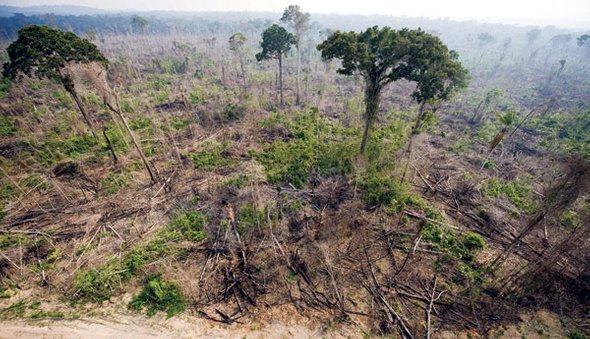
At Public Books, Nathaniel Popkin reflects on how the pervasive belief that humans are separate and distinct from the natural world, rather then deeply enmeshed in it, underlies our inaction in the face of climate change. To help think through this conundrum, Popkin turns to a handful of philosophical and environmental books: Staying with the Trouble: Making Kin in the Chthulucene by Donna J. Haraway, Being Ecological by Timothy Morton, Against Purity: Living Ethically in Compromised Times by Alexis Shotwell, and Save The Planet: An Amazonian Tribal Leader Fights for His People, The Rainforest, and the Earth by Almir Narayamoga Suruí and Corine Sombrun. Thinking alongside these authors, Popkin observes that a sense of disconnection from nature is in some ways a luxury that only some segments of humanity can afford. While the indigenous tribes of the Amazon, for example, face the effects of climate change every day, prosperous urban dwellers do not—at least not yet. Crucial to heading off the most devastating effects of climate change, argues Popkin, is for the urban dwellers to will themselves into feeling the same sense of urgency that the indigenous tribes do. Here’s an excerpt:
Timothy Morton asks that we banish the separation between humans and other life-forms. In an earlier and somewhat more groundbreaking work, The Ecological Thought, Morton avers that capital-N Nature doesn’t exist: “The ecological thought permits no distance.” All beings are thoroughly connected through an all-encompassing, interdependent convergence he calls “the mesh” (which Almir Suruí likely just calls the forest). “So the big picture here,” Morton writes in Being Ecological, “is that your ideas about, and your feelings about, and your plans about, lifeforms and the biosphere coexist along with lifeforms and the biosphere. They are part of what is connected together. You aren’t outside the biosphere looking in. You are glued to it, in a way that’s much more super than Super Glue.”
The biological concept of no separation, of the symbiotic yet not always harmonious intermingling of all life-forms (from microbes, bacteria, and viruses to giant fauna)—what Haraway describes as “becoming-with”—is owed to evolutionary biologist Lynn Margulis. In this now well-accepted way to account for life, at least among many biologists, sympoiesis, the term for various beings becoming-with, replaces autopoiesis, the old idea that species come into being and survive as more or less autonomous beings. Through this new lens, scientists now study assemblages of living organisms called holobionts. They are the most accurate measurable scale of life.
And so we’ve arrived at a new, more situated, and less distant place. We are the mesh, and the mesh is us. Morton commands us to banish guilt—or panic or despair—since there isn’t anything more to do in order to be ecological. His point isn’t impudence but rather freedom. If the mesh, or the biosphere, isn’t an object separate from us, he concludes, “It means we don’t have to hold on to a fantasy for dear life, the fantasy of anthropocentrism.”
We’re free, then, Haraway writes, to “make kin” with other beings of all kinds (Morton calls this “playful care”). Start small, with speculative visions in science and art, in politics and literature, and “maybe, but only maybe, and only with intense commitment and collaborative work and play with other terrans, flourishing for rich multispecies assemblages that include people will be possible.”
Image: Deforestation in the Amazon. Via Scientific American.